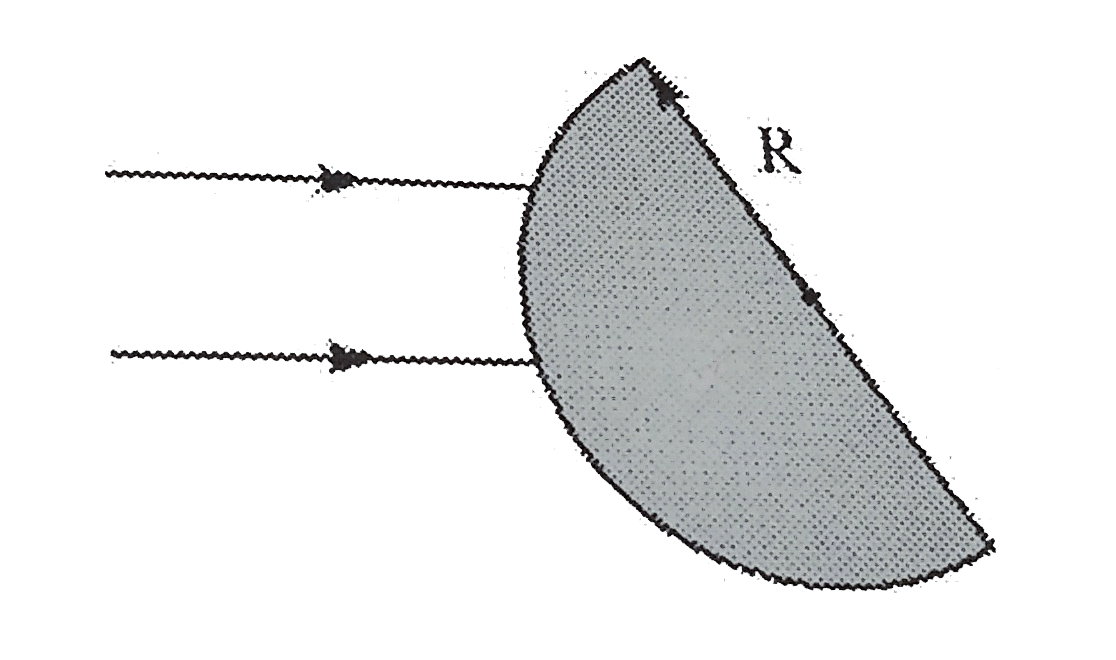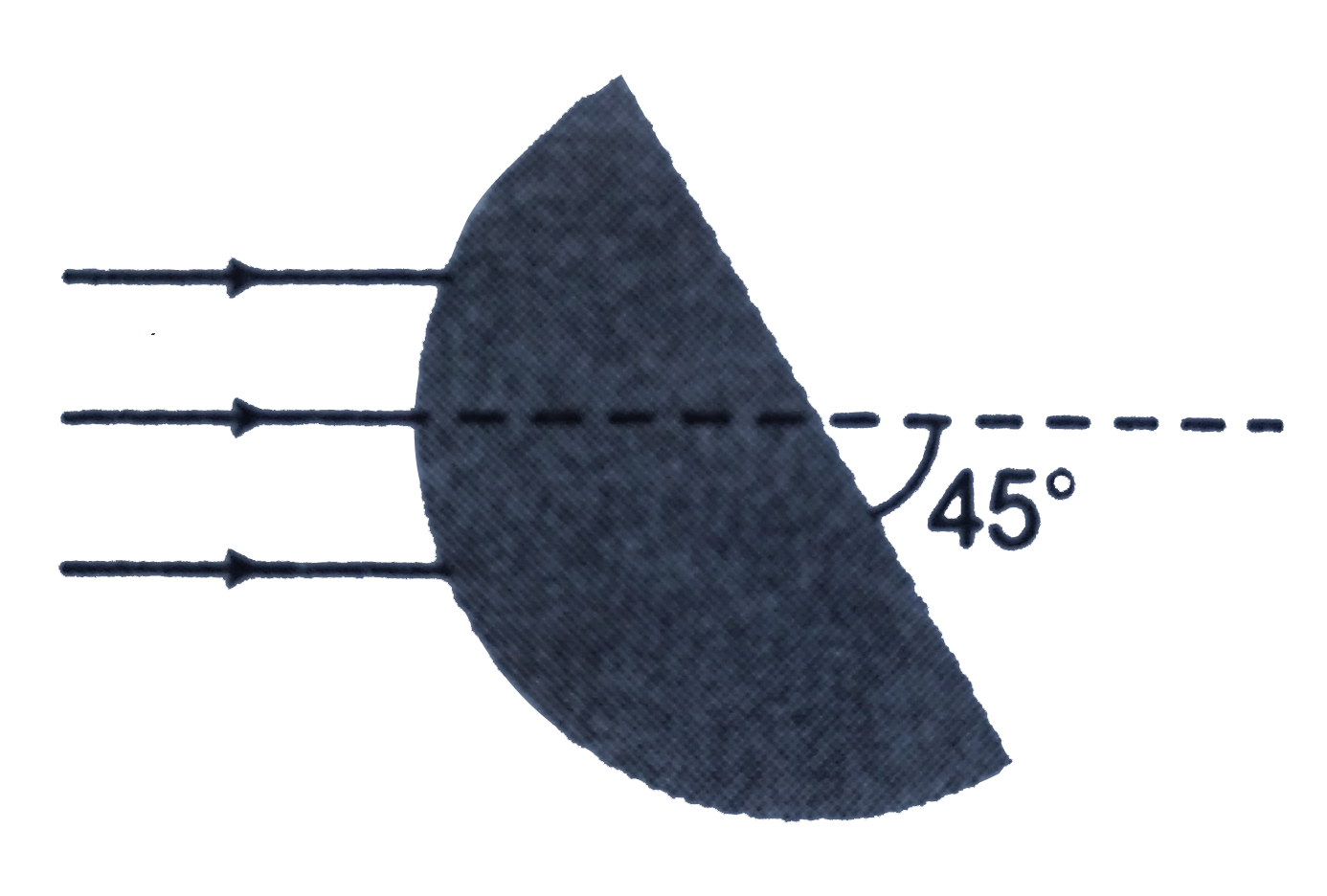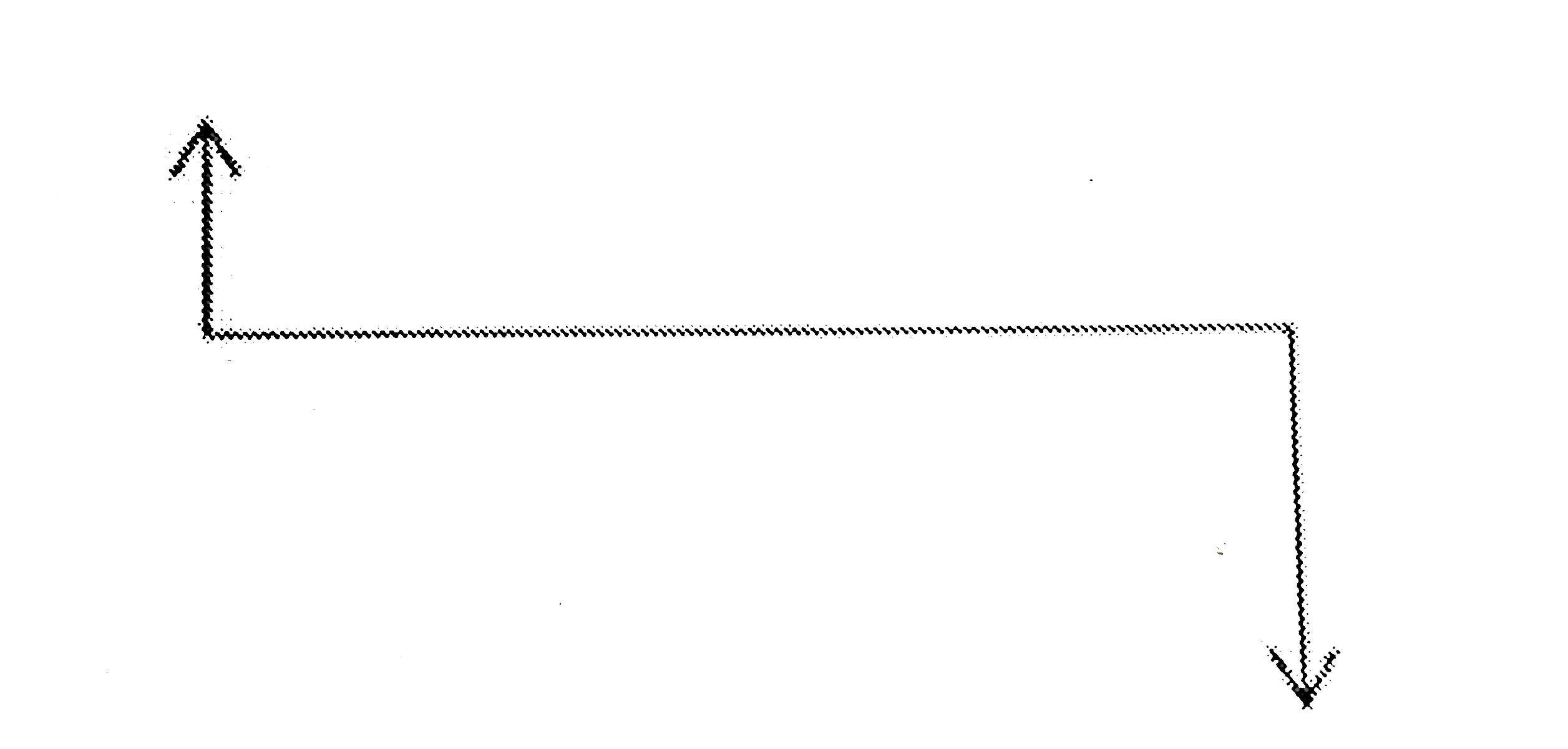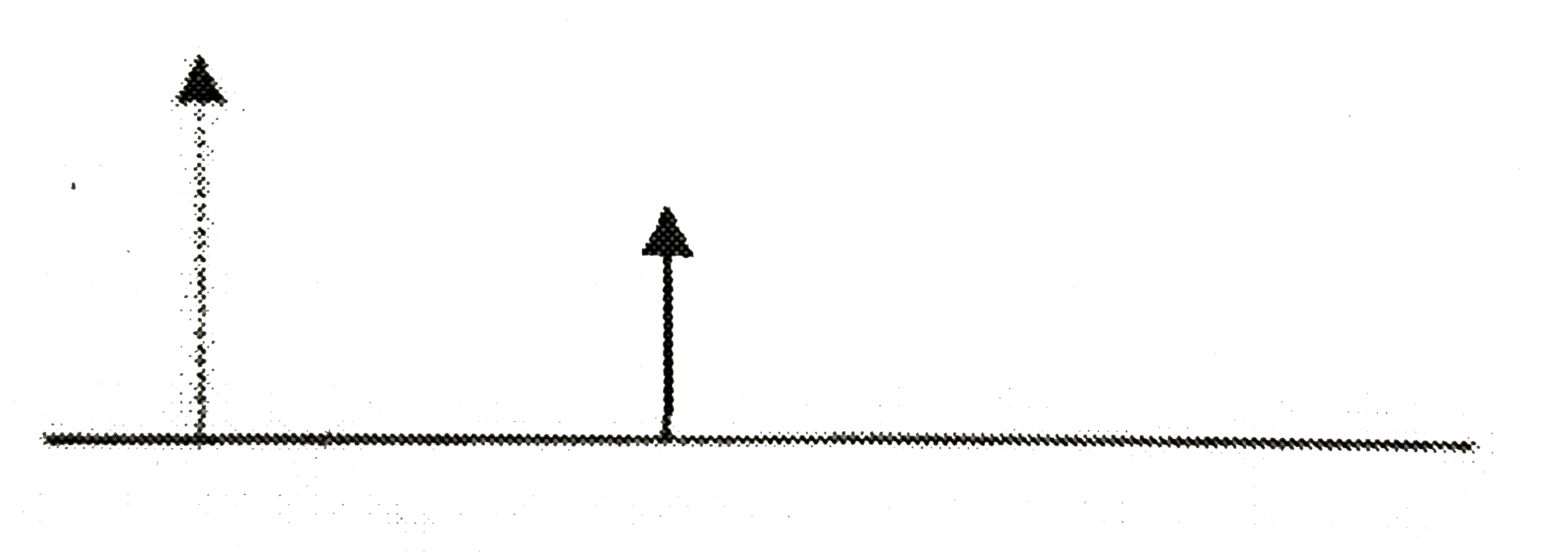A parallel bean of light travelling in water (refractie index is refracted by a spohereical bubble of radius 2 mm situation in water. Assuming the light rays to be paraxial. i. find the position of the image due to refraction at the first surface and the positoin of the final image, and ii draw a ray diagram showing the positions of oth the images.
 <br> The ray diagram is shown in ure. The equation for refractioin at a spherical surface is <br> <math xmlns=) ………….i
………….i
For the first refraction (water to air ) mm.
Thus,
or v=-6mmI_1I_1)mu_1=1, mu_2=1.33, R=-2mmu=-(6mm=4mm)=-10mm. 1.33/v+1/(10mm)=(1.33-1)/(-2mm)1.33/v=-0.33/(2mm)-1/(10mm)
the minus sigh shows that the image is formed on the air side at 5 mm from the refracting surface.
Measuring from the centre of the bubble,the first image is formed at 8.0 mm from the centre and the second image is formed at 3.0 mm from the centre. Both images are formed on the side from which the incident rays are coming.
Similar Questions
A parallel beam of light travelling in water (refractive index =4/3) is refracted by a spherical air bublle of radius 2mm situated in water. Assuming the light rays to be paraxial,
a. Find the position of image due to refraction at first surface and position of the final image.
b. Draw a ray diagram showing the position of both images.
View SolutionA parallel beam of light is incident on the surface of a transparent hemisphere of radius R and refractive index 2.0 as shown in figure. The position of the image formed by refraction at the first surface is :

View Solution
Knowledge Check
A parallel narrow beam of light is incident on the surface of a transparent hemisphere of radius R and refractive index μ=1.5 as shown. The position of the image formed by refraction at the image formed by refraction at the spherical surface only as
 AR2B3RCR3D2R
AR2B3RCR3D2RA parallel beam of light is incident normally on the flat surface of a hemisphere of radius 6cm and refractive index 1.5, placed in air as shown in figure (i). Assume paraxial ray approxiamtion.
 .AThe rays are focused at 12cm from the point P to the right, in the solutation as shown in figure (i)BThe rays are focused at 16cm from the point P to the right, in the situation as shown in figure (i).CIf the rays are incident at the curved surface (figure (ii)) then these are focused at distance 18cm from point P to the rightDIf the ray are incident at the curved surface (figure(ii)) then these are focused at distance 14cm from point P to the right.
.AThe rays are focused at 12cm from the point P to the right, in the solutation as shown in figure (i)BThe rays are focused at 16cm from the point P to the right, in the situation as shown in figure (i).CIf the rays are incident at the curved surface (figure (ii)) then these are focused at distance 18cm from point P to the rightDIf the ray are incident at the curved surface (figure(ii)) then these are focused at distance 14cm from point P to the right.A ray of light propagates from glass (refractive index =32) to water (refractive index =43). The value of the critical angel is
Asin−1(12)Bsin−1(√89)Csin−1(89)Dsin−1(34)

An object and the image obtained from the lens are as given above.
If the distance between the object and the image is 36 cm and the magnification is -2, find the focal length of the lens and draw the ray diagram to show the position of the lens.
View SolutionOne end of a cylindrical rod is grounded to a hemispherical surface of radius R = 30 mm. The refractive index of rod is 1.5. Find the position of the image placed on the axis of the rod at 10 cm from the pole.
View SolutionAn object and its image are as shown in the diagram below. If the object image distance is 4 cm and the magnification is 3, find type of the lens used and ratio u:v:f. Draw the ray diagram to show the position of the lens and the principal focil.

View SolutionA glass dumbbell of length 30cm and refractive index 1.5 has ends of radius of curvature 3cm. A point object is situated at a distance of 12cm from one end of dumbbell. Find the position of the image formed due to refraction ai one end only.
View SolutionA small object is 2 cm below the concave meniscus of water in a test tube . The radius of the meniscus is 5mm and μ for water is 4/3. Find the nature and position of the image.
View Solution
